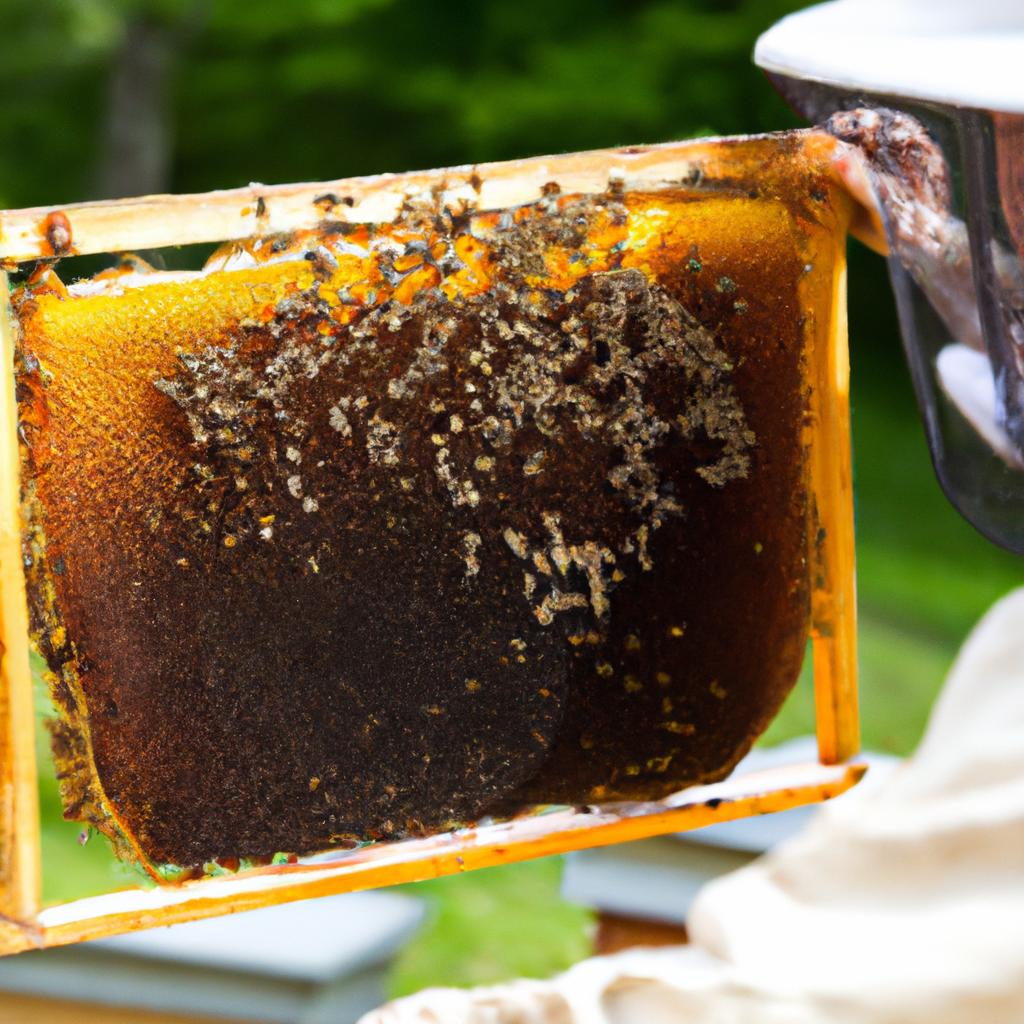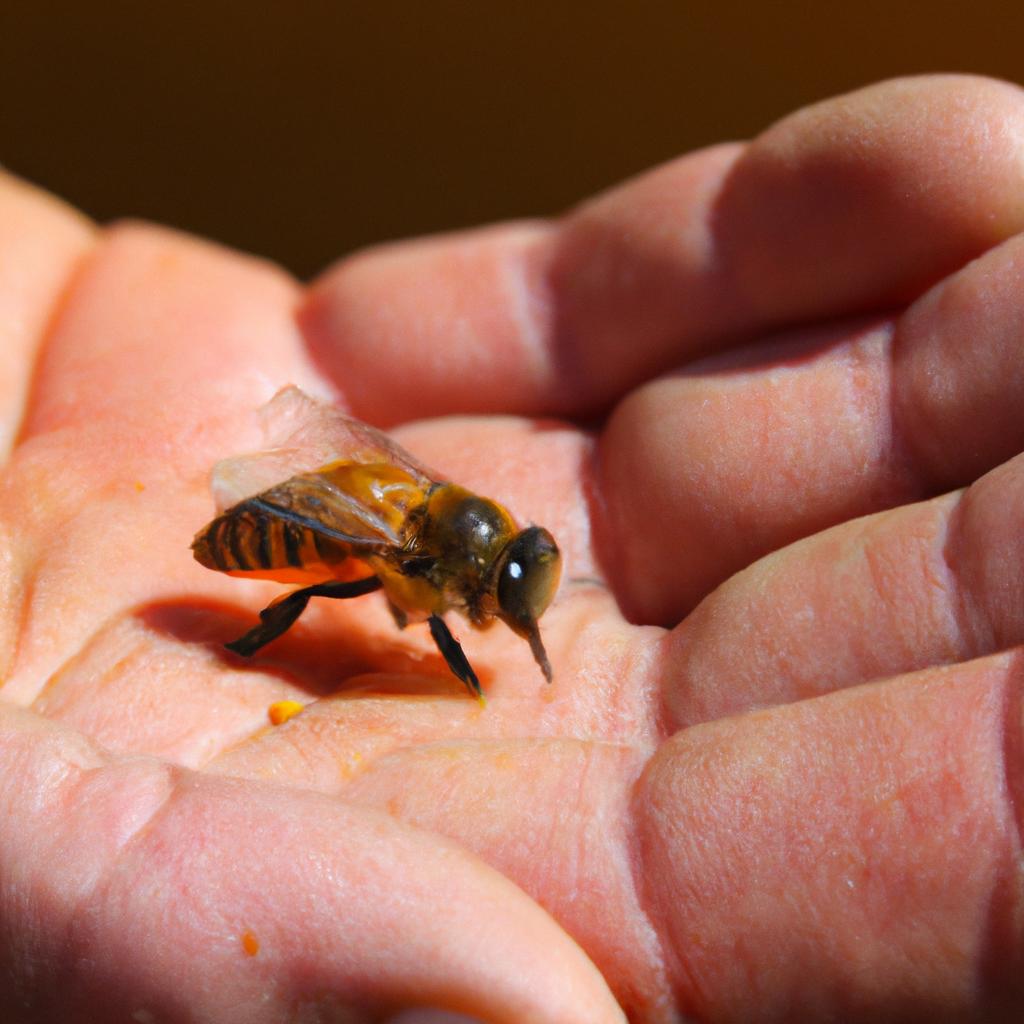Queen cells are essential to the survival of a honeybee colony as they produce the queen, who is responsible for laying eggs and ensuring the growth and development of the colony. However, not all queen cells are viable, and it is essential to identify the ones that are to ensure the success of the colony. In this article, we will discuss how to identify viable queen cells and what factors to consider when assessing them.
Appearance of a Viable Queen Cell

The appearance of a queen cell is an excellent indicator of its viability. A viable queen cell should have a smooth, well-formed shape, and be situated vertically on the comb. Its color should be pearly white and slightly translucent, and the wax cap at the top should be smooth and even.
On the other hand, if the queen cell appears lumpy or irregular, it may indicate that the larva inside was not fed enough royal jelly, which can lead to a weak or non-viable queen. Similarly, if the cell is lying on its side, it is unlikely to produce a viable queen.
Another critical factor to consider is the size of the queen cell. A viable queen cell should be larger than worker cells and slightly smaller than drone cells. If the queen cell is too big or too small, it may indicate that the larva inside is not receiving the correct amount of food and may not develop into a viable queen.
In summary, if a queen cell appears smooth, well-formed, and is situated vertically on the comb, it is likely to be a viable queen cell.
Timing of Queen Cell Development

The timing of queen cell development is also an important factor to consider when assessing viability. Queen cells are created when the colony needs a new queen, either due to the death or retirement of the existing queen or when the colony is preparing to swarm.
The ideal time for a queen cell to develop into a viable queen is between nine and ten days after the egg is laid. At this stage, the larva should be fully formed, and the queen cell should be sealed with a wax cap. If the queen cell is opened before this time, it may indicate that the larva was not fully developed, and the queen may not be viable.
Conversely, if the queen cell is not opened after ten days, the queen may have developed too much, making it difficult for her to emerge from the cell, resulting in a non-viable queen.
In conclusion, identifying a viable queen cell requires careful observation of its physical appearance and timing of development. By considering these factors, beekeepers can ensure the success of their colonies and the production of healthy, strong queens.
Timing of Queen Cell Development
The development of a queen cell goes through several stages that can help determine its viability. After the queen bee lays an egg in the cell, it hatches into a larva that is fed royal jelly by worker bees. The larva continues to grow and develops into a pupa before finally emerging as a queen bee.
The ideal timing for a queen cell to develop into a viable queen is between 9 and 10 days after the egg is laid. If the queen cell is opened before this stage, it may indicate that the larva was not fully developed, and the queen may not survive. Conversely, if the queen cell is not opened after ten days, the queen may have developed too much, making it difficult for her to emerge from the cell, resulting in a non-viable queen.
To determine if a queen cell has developed properly, beekeepers must observe the timing of the development of the cell closely. They should also check for any irregularities in the cell’s appearance, such as deformities or discolorations.
Queen Cell Location
The location of a queen cell can also affect its viability. Queen cells are usually located on the bottom of the comb, near the brood area. If the queen cell is located too close to the edge of the comb or is not properly attached, it may not receive enough warmth and humidity from the colony, resulting in a non-viable queen.
Another factor to consider when assessing the location of a queen cell is the density of queen cells in the colony. If there are too many queen cells in the colony, it may indicate that the colony is preparing to swarm or that the existing queen is not laying enough eggs. In these cases, the viability of the queen cells may be reduced, and beekeepers may need to take measures to prevent the swarm or introduce a new queen.
In summary, the location of a queen cell can affect its viability, and beekeepers must consider factors such as attachment, warmth, and humidity. They should also observe the density of queen cells in the colony to determine if there are any underlying issues that may affect the viability of the queen cells.
Bee Behavior and Queen Cell Viability
The behavior of worker bees is crucial to the development of queen cells and determining their viability. Worker bees are responsible for feeding the larva inside the queen cell with royal jelly, a nutrient-rich secretion that is essential for the development of a viable queen.
Observing the behavior of worker bees around the queen cell can provide valuable information about its viability. If worker bees are frequently visiting the queen cell and appear to be feeding the larva inside, it is a good indication that the queen cell is viable. However, if worker bees are avoiding the queen cell or appear to be pushing it away, it may indicate that the larva inside is not developing correctly, and the queen cell is not viable.
Another critical factor to consider is the number of queen cells present in the colony. If there are multiple queen cells present, it may indicate that the colony is preparing to swarm, and the queen cells may not be viable. Conversely, if there is only one queen cell present, it is more likely to be viable, as the colony is investing all its resources into producing a new queen.
Conclusion
In conclusion, identifying viable queen cells is essential for successful beekeeping. A viable queen cell should have a smooth, well-formed appearance, be situated vertically on the comb, and be the correct size. Timing is also crucial, with the ideal time for a queen cell to develop into a viable queen being between nine and ten days after the egg is laid.
Observing the behavior of worker bees around the queen cell can also provide valuable information about its viability. By considering all these factors, beekeepers can ensure the success of their colonies and the production of healthy, strong queens.
As a beekeeper, it is critical to prioritize the health and well-being of your bees. Identifying viable queen cells is an essential part of this process, and by following the guidelines outlined in this article, beekeepers can ensure the long-term success of their colonies. Beekeepinglove.com hopes that this article has provided valuable insights into how to identify viable queen cells and why they are crucial for the success of a honeybee colony.
